#Interconnected universe consciousness
Text
Welcome to the Fusion of Sexuality and Spirituality
Dive into the quantum mystic journey where spirituality meets science. Explore sacred sexuality, awaken your consciousness, and embrace the interconnectedness of all. Join us on this transformative adventure to uncover the universe within and around us.
Quantum Intimacy: Beyond Space and Time by David Sawin
Imagine stepping into a realm where every breath and touch is a gateway to deeper consciousness. Here, sexual energy is not merely biological but a quantum field of infinite possibilities. This energy, known as prana in some traditions, mirrors the entangled nature of particles in quantum physics, where connection transcends physical space…

View On WordPress
#CosmicWebInterconnectedness#Energetic entanglement in relationships#Energy fields and intimacy#Healing through sacred sexuality#Interconnected universe consciousness#Kundalini energy activation#KundaliniAwakeningQuantumJourney#Mysticism in modern spirituality#Practical spirituality and science integration#Quantum entanglement explained#Quantum physics in daily life#QuantumConsciousnessSpiritualAwakening#QuantumEntanglementLove#QuantumIntimacyExploration#QuantumMysticismInRelationships#SacredCommunionUniverse#SacredSexualityQuantumUnion#Spiritual connectivity and quantum theory#SpiritualGrowthQuantumPerspective#Tantric meditation techniques#TantricPracticesQuantumMysticism#TranscendentLoveQuantumScience
0 notes
Text
𝗞𝗲𝘁𝘂 𝗗𝗼𝗺𝗶𝗻𝗮𝗻𝘁 𝗧𝗵𝗲𝗺𝗲𝘀 — 𝐍𝐚𝐤𝐬𝐡𝐚𝐭𝐫𝐚 𝐎𝐛𝐬𝐞𝐫𝐯𝐚𝐭𝐢𝐨𝐧 𝐒𝐞𝐫𝐢𝐞𝐬 (part 1) 𝐨𝐟 𝐩𝐚𝐫𝐭 𝟏𝟎
disclaimer: spoilers for all movies or shows mentioned.
the warnings: mentions of drug abuse, sexual violence, self-harm, genocide, mental disorders/illnesses, cannibalism and self amputation.
The most interesting theme within all the Ketu nakshatras was one that was unexpected, as it is common to mainly associate Ketu with concepts of disconnection or isolation from society as a whole -- since Ketu is often linked with the 12H. But it is more about the interactions with the unseen forces within society more than anything. Because the 12H also represents the collective's consciousness and all the interconnected energies that come with that which Ketu becomes possessed by. And it is Ashwini that is the most sensitive Ketu nakshatra, as it easily becomes consumed & absorbed by these 12H energies which often leads to chaos and loneliness.

Ashwini nakshatra embodies Nothingness which is the oldest energy in the universe. It's between a space before actualized creation, and after the rise of awareness that's emerged from Nothingness (or the Cosmic Void). It is very fitting that this is the first nakshatra; but it should also be considered the last as it essentially represents the non-duality of Life & Death. This theme is further extended in Bharani and beautifully explored in that nakshatra, but in Ashwini we focus on the spirit's evolution. The energy found in this nakshatra is as undeveloped as it is chaotic, which is why evolution needs to take place -- and this usually involves extreme harsh forces to tame it. It is in Ashwini where there's confusion or lack of self-awareness of one's own identity as energies here become repressed, unconsciously accumulating. I'm going to use some films as examples to explore this point.
First, I'm going to use the most typical Ketu-coded character. Ashwini Moon Christian Bale's Patrick Bateman in "American Psycho". This film follows an investment banker who relishes in the wealthy excesses of his superficial lifestyle in which everybody else around him also revels in. His life is empty, mostly revolving around getting into exclusive restaurants, wallowing in designer suits, having a meticulous morning routine etc. There's a pressure in general for conformity and Ashwini is sensitive to these energies which they take up, driving them to compete and also go too far with this -- because it's no longer about conforming anymore. It's become an obsession, and these pressures drive Patrick Bateman into homicidal tendencies as an outlet. This film perfectly encapsulates modern-day consumerisms, and it is of course an Ashwini native who is driven into a descent of madness from this empty, superficial culture he's subjected to.
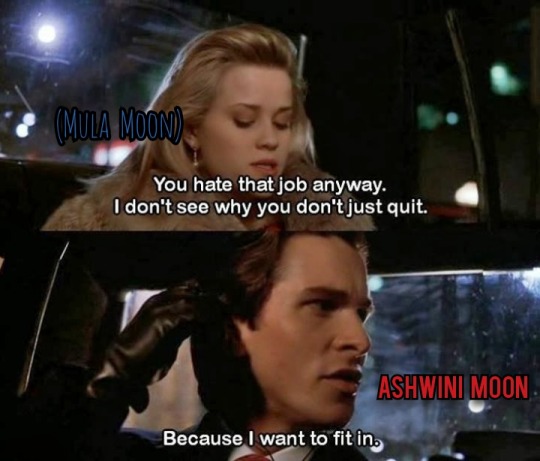
Nothing can fill up the emptiness inside of him and he knows that. This crippling, painful understanding is what continuously manifests his violent self-hatred and hatred towards others. And this is why he is forever trapped in a cycle of loneliness, as he is surrounded by the same narcissistic, self-absorbed suits who will continue to maintain this soulless, superficial culture.
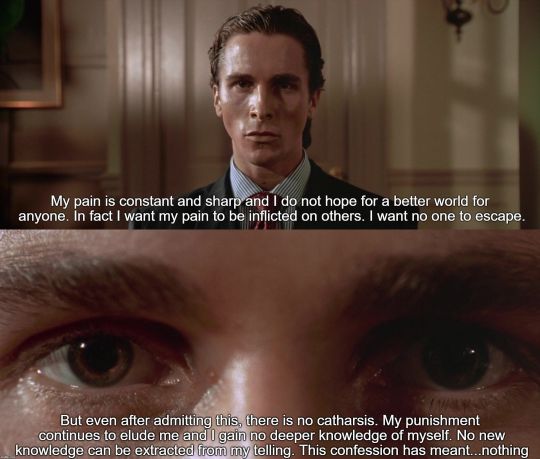
The movie was adapted from the book with the same name, written by Mula Moon Bret Easton Ellis whose own experiences inspired the book "American Psycho".
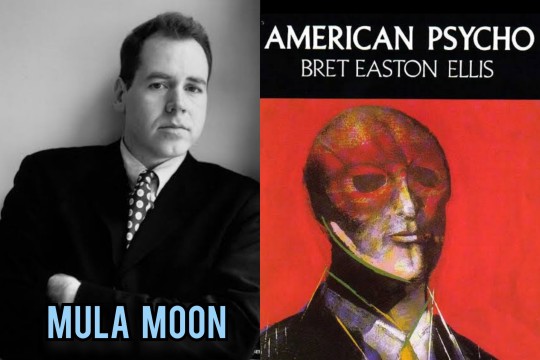
Quote from an interview; OregonLive (2010);
"[Patrick Bateman] did not come out of me sitting down and wanting to write a grand sweeping indictment of yuppie culture. It initiated because my own isolation and alienation at a point in my life. I was living like Patrick Bateman. I was slipping into a consumerist kind of void that was supposed to give me confidence and make me feel good about myself but just made me feel worse and worse and worse about myself. That is where the tension of 'American Psycho' came from... It came from a much more personal place."
-- Mula Moon Bret Easton Ellis
Now, onto the movie "Fight Club", which was directed by Magha Sun David Fincher, and stars Magha Sun Edward Norton and Mula Sun Brad Pitt.
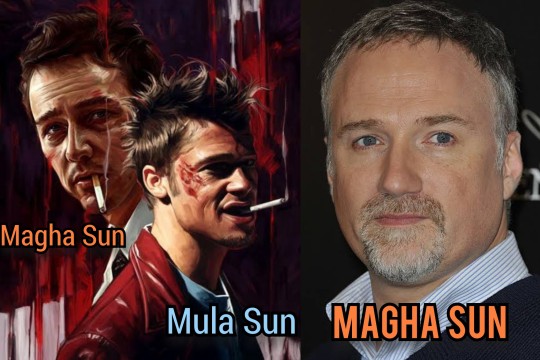
The most highlighted character from this film, played by Brad Pitt, is Tyler Durden, who plans on making a revolution to destroy the hyper-capitalistic, materialistic superficial culture that we saw destroy Patrick Bateman from the inside in "American Psycho".
(video - 🎧)
Of course, just like Ashwini Moon Patrick Bateman took his obsessive consumerism too far; Mula Sun Tyler Durden lays on the opposite spectrum -- aiming to destroy modern society by blowing up all credit card companies and ruining the world's economy. Mula is related to destruction as it is ruled by Nirriti, the goddess of destruction. The oppressive forces that weigh on this Mula character, Tyler Durden, causes him into a spiral for freedom (9H), using extremities and acts of terrorism to be rid of ego/society. Whereas Ashwini, having no solid identity and just being undeveloped in nature, is more likely to conform; but so long as Ketu is there, there will always be an emptiness in the ambitious pursuit of things. Ashwini can grant excess wealth and fame, but with no inner fulfillment or balance, you see characters like Patrick Bateman. Or Daniel Plainview from "There Will Be Blood".
A movie directed by Paul Thomas Anderson who has Ketu in Magha, and stars Ashwini Moon, Mula Ascendant Daniel Day Lewis who portrays Daniel Plainview. Plainview is more Ashwini, as he is an extremely ambitious, capitalistic and competitive oilman.

His pursuit for wealth and power leads him to personal loneliness, isolation and emptiness -- we see how Ketuvians become so drained and eaten alive by the energies they absorb in the pursuit of things. Similarly to Patrick Bateman, he not only hates others but himself and wishes for no one to succeed in life.
(click on the gif(s) if they're buffering lmao, i swear they're cheap)


His primal competitiveness and self-loathing even drives away his only family -- his only child. His adult son means to do his own oilrig business and cuts his partnership with him. But Plainview's unchecked ambition shows that even after attaining success and power, he literally goes ahead to disown his own son as he considers him competition now. And now he extends the same hatred he has for others to him. Further isolating himself; this validating his deep sense of loneliness that was always there with his self-loathing.

The film ends in an Ashwini fashion; in which Plainview goes into a psychotic meltdown and murders someone who he has had a long stewing hatred for.
(YouTube clip by me - 🎧)
youtube
I wanted to provide a brilliant video from the YouTuber "The Vile Eye", who explored the dark nature of this character; because it perfectly illustrates Ashwini nakshatra in a twisted way -- especially in how Aries in this segment is influenced by Ketu forces. Everything about this character is every Aries stereotype you can think of from the top of your head, but Ketu exaggerates it to the point of extremity and tragedy.
youtube
Amazing video for anyone who wants to understand Ashwini at its extreme which can manifest in real life of course.
Now in the series "Peaky Blinders", which I quickly wanted to mention, stars Ashwini Moon Cillian Murphy whose character faces moral dilemmas, as his relentless pursuit of power contributes to his moral ambiguity.
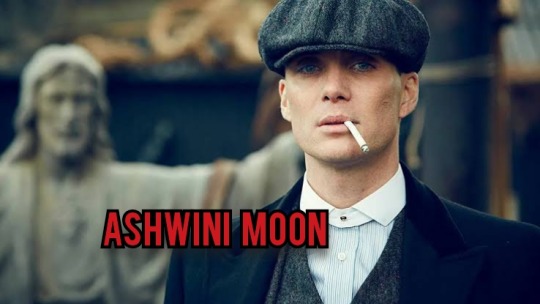
His ruthless ambition to become the most powerful in the criminal underworld is something I couldn't help but relate it back to Ashwini's drive & competitiveness.
The movie "Scarface" stars Ashwini Sun Al Pacino who plays Tony Montana. And fun fact, Tony Montana is loosely based and inspired by the real-life figure, Al Capone, who was literally a goddamn Ashwini Moon. So, I say Scarface is a fucking Ashwini movie.
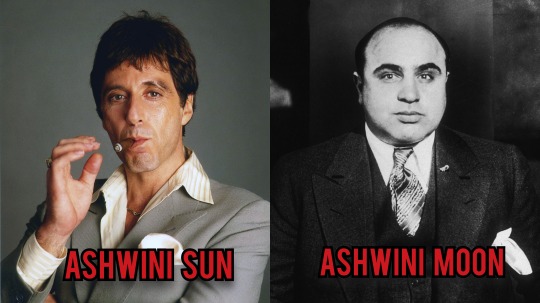
Both Tony Montana and Al Capone had unchecked ambitions and an unrelenting desire for power. In Ashwini, extreme power can be attained, and we saw how Tony Montana quickly rose to it (as Ashwini is the Star of Transport and it is associated with Shidhra Vyapani Shakti which translates to 'The Power to Quickly Reach Things'). Similarly, Al Capone was also driven by the desire for power and he attained it.
Like Daniel Plainview in "There Will Be Blood", Tony Montana starts to experience isolation after all of his achievements. His chaotic behaviour contributes to his alienation, and he starts to feel intensifying loneliness, which seems to be a theme with this nakshatra. And this film also ends in Ashwini fashion; with absolute chaos, the psychotic unraveling of Tony and of course death.
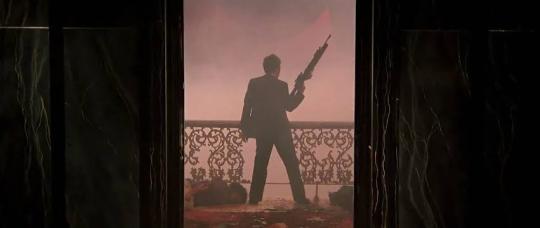
I wanted to also add in the movie "Nightcrawler" which stars Mula Sun Jake Gyllenhaal who plays a character willing to go to the extreme lengths for success and personal achievement, to the point of exploiting others and not giving two fucks about ethical boundaries.

He has a distorted view of success and has an unchecked, ruthless ambition which is common in Ketu nakshatras. He is also a socially isolated character, behaving inappropriately as he is disconnected from social norms. He lacks zero empathy. In his obsessive & relentless pursuit of success, he is devoid of humanity. Had to mention this film because these themes are not exclusive to Ashwini.
But as I did mention, Mula is more likely to be aware of societal pressures and these natives often feel deeply disturbed by them -- while Ashwini is more focused on the Self, as it's ruled by the 1H. In the film "Falling Down", Mula Moon Michael Douglas plays a character who has become disillusioned and is now aware of the pressures and oppression caused by the modern-day life. This movie is literally directed by Magha Sun Joel Schumacher.

He confronts many issues such as homelessness and crime, which are heavily rooted in the greedy, capitalistic system of modern society. But he becomes violent and chaotic himself, going into a descent to madness (from absorbing the energies felt by the collective who also feel the weight of these oppressive forces within society). This movie deals with the consequences of unchecked rage, a theme shared in all Ketu nakshatras.
The film "Taxi Driver", which stars Magha Sun Robert De Niro and is directed by Magha Ascendant Martin Scorsese, depicts a man who suffers from extreme loneliness, alienation from society, and struggles with existential crisis. The film explores social decay; such as social disparities, the disillusionment of our main character to society's ills, crime, poverty etc. He goes into a descent into vigilantism, using violence as a catharsis which is a common thing for these Ketu nakshatras (mainly Magha and Mula as it looks at societal frustrations and the emptiness in life/modern culture).
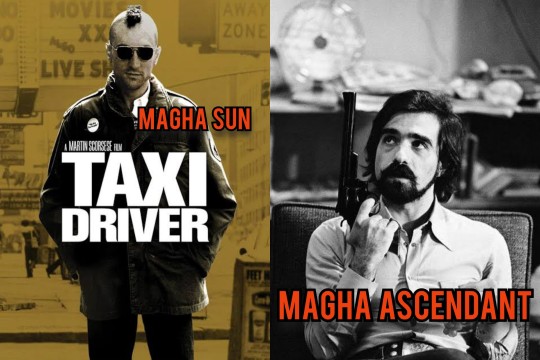
The character also suffers from a possible case of untreated mental illness, and insomnia -- and this seems to be a theme with all Ketu nakshatras in general.
Another film where the main character suffers from extreme insomnia is "The Machinist", starring Ashwini Moon Christian Bale whose character's insomnia and untreated mental illness literally contribute to his isolation and alienation.
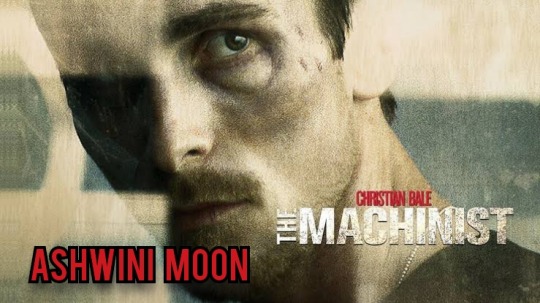
will be coming back to this film in my part 2 post
And the film "Fight Club", in which Magha Sun Edward Norton plays an insomniac character who has dissociative identity disorder. And his split personality is interestingly played by Mula Sun Brad Pitt.
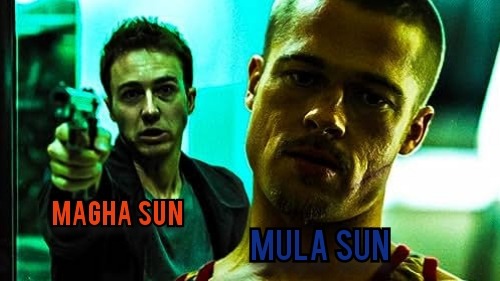
Then we have the film "Insomnia", directed by Ketu in Magha Christopher Nolan, starring Ashwini Sun Al Pacino who plays an insomniac detective who faces some mental challenges.

There is a spiritual belief about insomnia, which suggests that there may be a disturbance in one's spirit; unresolved issues that have been long suppressed can be linked to an imbalance of energy within the body. This causes restlessness and more mental problems. This could make sense as Ketu and the 12H deal with what is unconscious -- and how that tends to be our deep, rooted traumas and the way in which they affect us & those around us. And not just traumas, could just be repression of one's own internal suffering from either loneliness or external pressures. We see this with Patrick Bateman, whose only outlet is literal murder, or Tyler Durden's 'revolutionary' fight club causing more destruction around him as planned. Both characters violently act out from these unaddressed decaying energies within themselves and from within society.
The series "Sharp Objects", directed by Magha Moon Jean-Marc Vallé, mostly deals with family traumas, but also shows how those traumas and unresolved energies literally cause death and chaos around them.

Camille Preaker, who is played by Magha Sun Amy Adams, is deeply traumatized and troubled. She has a history of self-harm and has many scars on her body; her self-destructive behaviour is a coping mechanism for what happened when she was young (sexual violence by a group of boys and witnessing the slow, painful and preventative death of her sister). Then we have her younger half-sister Amma, played by Magha Moon Eliza Scanlen, who has a hidden dark side that has been shaped by the family's troubled history and generational trauma. By the end of the series, we find out that Amma is the killer of the violent murders that have shocked the townspeople of Wind Gap. It is Amma who is responsible for all of the gruesome deaths of the girls whose teeth were removed. As Camille's coping mechanism is cutting herself as self-punishment for all the guilt she harbours from the death of her sister, Amma literally commits homicidal acts. All of this connecting to just how messed up, and complex, their trauma and the community they grew up in is. And then we have their mother, played by Mula Moon Patricia Clarkson, who has Munchausen syndrome and is responsible for the death of her oldest daughter. Camille was a witness to her sister's suffering and death, and she sees her mother as a monster and now her little sister is an extension of her. This series is such a good example of how our own personal unchecked traumas affect others, especially those who aren't involved. And how much destruction can be caused, as we see with Amma killing other girls as an 'outlet'. This is why I now realize how wrong I was about Ketu, as Ketu is not necessarily about isolating from society. Regarding society, Ketu will be the complex yet intricate unaddressed/rotting energies within society, and it always relates back to individuals' personal generational traumas. It makes sense that Magha relates to ancestry roots and origins of oneself, even the origins of one's trauma.
Now onto the film "Nocturnal Animals", which is directed by Magha Sun Tom Ford, stars Magha Sun Amy Adams and Mula Sun Jake Gyllenhaal.

Amy Adams plays Susan who is a successful art gallery owner. She receives a manuscript for a novel called Nocturnal Animals sent to her by her ex-husband Edward who's played by Jake Gyllenhaal. The book is extremely violent & tragic; but it actually turns out to be a symbolic reflection of their relationship and marriage. Bringing in the Ketu themes of unresolved trauma and getting to the roots of it (Mula theme). This book serves to make Susan confront how much of her actions fucked him up. The movie focuses on the confronting of one's past, telling of how trauma will still continue to shape the lives of those involved. And the movie shows that even Susan still has unresolved issues just by her repulsed reactions to extreme parts of the novel.
The movies "Split" and "Glass", stars two Ashwini Suns, Anya Taylor Joy and James McAvoy. McAvoy's character, Kevin, has dissociative personality disorder and these different personalities exist to keep him safe. His trauma is so extreme and deeply painful that it manifested into the creation of The Beast, the most dangerous and superhuman personality. Three kidnapped girls are prey to The Beast as they end up being devoured by it but there is only one doesn't fall victim to him -- and that's Anya Taylor Joy's character Casey.
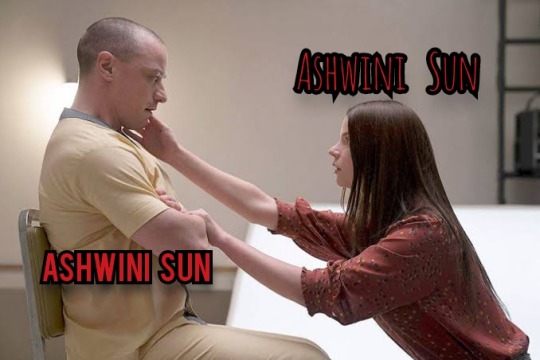
The reason why she doesn't fall victim is because she, too, has suffered extreme trauma and her resilience through it is what creates an immediate connection with Kevin. It is when The Beast sees her scars that he calls her pure, implying that those who have been damaged are the ones who are truly evolved.
(YouTube clip by me - 🎧)
youtube
Also, "Split" is another example of how deeply repressed energies and traumas of one can ruin everything around them and victimize those close to the Ketuvians (usually uninvolved people's lives being violently taken; "Split", "Sharp Objects", "American Psycho", "Falling Down" etc.).
Ashwini Moon Zendaya in the series "Euphoria" plays a character, Rue, who has been through a significant amount of trauma, including the passing of her father. She uses self-destructive ways to cope with her deep emotional pain and grief, very similarly to Magha Sun Amy Adams's character in "Sharp Objects". Rue uses drugs to numb herself from her harsh realities. There is a moment in the series in which she has a chaotic meltdown.
(YouTube clip by me - 🎧)
youtube
Something I now understand with Ashwini is how explosive, volatile and scary its ungrounded energy can be -- exactly why I'd commonly associate it with hysterical meltdowns which can lead to accidental or unplanned homicidal acts or other forms of harm/self-harm. This scene of Rue is vaguely taking me back to Ashwini Moon Christian Bale's spiraling and meltdowns in "American Psycho".
(YouTube clip by me - 🎧)
youtube
Ketu, especially with Magha, seems to cause erratic behaviours when its natives aren't purified of their long-accumulated baggage in their unconsciousness -- exactly why the 8H is also ruled by Ketu as Scorpio shares this particular theme. As long as there is deep disturbance and imbalance in the body, there is no rest for the soul -- even for future incarnations to come.
But now, I want to touch on the senseless harshness of Ketu. Remember, this energy embodies the eternal sucking void. Mula nakshatra relates to the center of the cosmic void and goes straight into the roots of it. Ashwini has already risen from it, while Mula is centering itself back into it. Mula is where we seek an awakening to the truth of what is behind reality. What is on the other side of the cosmic void? Truth is searched in Mula, but it seems that it is Ashwini that understands that chaos is the absolute truth of reality. There is no meaning to anything, which sounds nihilistic, but it is what makes life beautiful.
In the film "The Pianist", written & directed by Magha Sun Roman Polanski, starring Ashwini Sun Adrien Brody, starts out quite warm with a well-put together family and a handsome talented Ashwini man who dreams of being a pianist. But things take a drastic turn. We see a once bright-eyed boy turn into the shell of the person he once was after going through such harrowing events, and things just keep getting tragically worse and worse until there is not even a sliver of hope anymore. The majority of the film is literally just despair, senseless cruelty, and the protagonist's soul slowly becoming annihilated.

I've never watched a film more Ketuvian than this; surrounded by genocide, death and being completely isolated while being eaten by one's own lonely misery.
One moment you think one character is going to make it out alive somehow because they have the conviction and drive to survive, but the film immediately takes that idea away as they helplessly die. You think the protagonist is going to see some light, and the film even makes you slightly comfortable in some moments given the harsh realities, but you witness just how everything remains tragic. There are no answers to any prayers, as suffering is just ongoing. This tonality creates another layer of feeling trapped, and you watch as the character just lets life do whatever it wants to him as he is trapped in a world where he is helpless anyway. With Ketu, you realize that there was never any security or answers to this senseless chaos in this world to begin with.
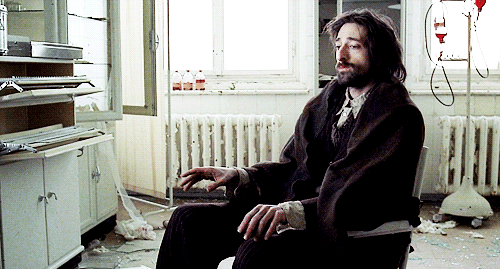
But his survival at the end makes you question why he even went through all of that. There was no lesson to be taken from such a tragic, horrifying experience. Why did his other friends and family die but not him? In the end, he became a successful pianist as he dreamt of from the beginning. He was exceptionally talented from the start; these events took everything away from him except his passion for the piano. What he went through was senseless, as Ketu has no prime motivation. Saturn will push you through the worst so that you can reach a level where you can now attain all of your reaped rewards, Ketu doesn't care for what you get in the end -- that's Rahu's objective, as Rahu deals with ego; Ketu deals with the evolution of one's soul and that usually involves its annihilation.
The kdrama "Save Me", stars three Ketu natives; Magha Moon Seo Yea-ji, Mula Moon Woo Do-hwan and Mula Sun Ok Taec-yeon. It follows Seo Yeah-ji's character, Sang-mi, and her family after moving into a new town. They become influenced and entangled by a religious cult. Sang-mi becomes aware of just how oppressive and dangerous the cult is when she & her family literally lose all control to them. Sang-mi's attempts to escape become futile, as she remains trapped under the oppressive abuse of the cult, turning her more into a shell of the person she once was.
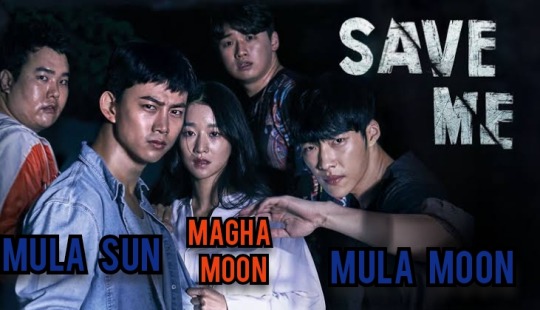
(The Mula male characters are the ones who find out about the Magha girl's whereabouts, and they plan to save her and her family from the clutches of the cult.)
She witnesses extremely harrowing events, and the drama makes you feel the sense of hopelessness that she's feeling -- trapped and completely helpless no matter how much she tries to save herself and family. There is a similar sense of hopelessness and lose of one's own identity found in "The Pianist", but in this drama it's more about extreme involuntary isolation from society (which I will be expanding on in part 2 of this exploration).
The film "Society of the Snow" is literally directed by Ashwini Moon J.A. Bayona, based on real life events. There's a documentary based on these events as well, "Stranded: I've Come From A Plane That Crashed On The Mountains", directed by Magha Moon Gonzalo Arijon.
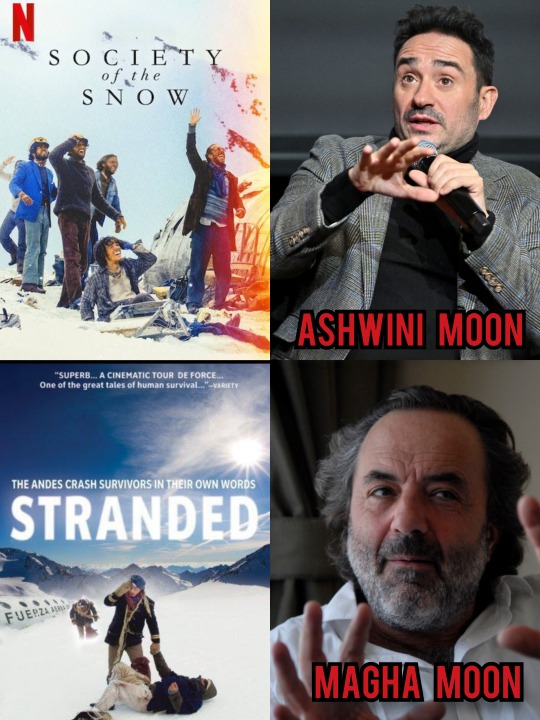
Now, in the "Society of the Snow", there is a tone of hopelessness set in the film because of the gruesome reality that these characters (based on real life people) experience. And never in their lifetime did they think that everything was going to change so drastically from just living the average life of normal teenage boys. These characters, who were in a rugby team, get on a plane that would soon crash onto glacier surrounded by endless cold harsh mountains -- with just a piece of the wrecked plane remaining in which they take shelter in. The protagonists are surrounded by the dead bodies of friends who did not survive the crash, and now they must spend the first night in harsh coldness while many are severely injured. They couldn't even sleep, the first night being spent with many of them crying and wailing out loud, nearly freezing to death. One day after, a rescue helicopter searches for them, and they all scream out for help. But the helicopter misses them as they're barely noticeable under all the glacier that surrounds them. This is when the sense of hopelessness and despair kicks in and intensifies as the story progresses. Now that chances of being rescued have completely fallen to zero, they realize that they can't ignore their growing hunger anymore. They all have no choice but to eat the flesh of the dead bodies after running out of chocolates. We see how these decisions mentally challenge some of the characters. It is truly tragic as they were stranded, isolated from the world and completely in despair in every waking day, for a span of 72 days.
After being rescued, we see just how malnourished they were from the looks of their bodies. They come back home bone-skinny and weak. And the monologue in the ending scene tells us how the survivors wondered; "Why didn't we all get to come back [home]?" "What is the meaning of it all?" These are the questions asked when we observe these raw Ketu events.
Ashwini Moon J.A. Bayona also made the film "The Impossible", which is about survival and resilience -- based on real life events. Much like "Society of the Snow", it also has a sense of complete despair and there is an involuntary separation of a family (which reminds me of "The Pianist" in which Ashwini Sun Adrien Brody's character is also separated from his family in the story).

"Nothing is more powerful than the human spirit" it writes on the poster.
"Nowhere", is directed by Ashwini Moon Albert Pintó, a survival thriller about a pregnant woman who finds herself isolated from society as she's drifting in the sea trapped inside a container. Because of her newborn baby, she is forced to survive and protect her child even when there is no hope. The reason why she's even in the container is because she was fleeing a society of a dystopian future in which women & children are caged and murdered (Ketu's oppressive forces and her attempt to run away from them leads her to total isolation which is another manifestation of Ketu).
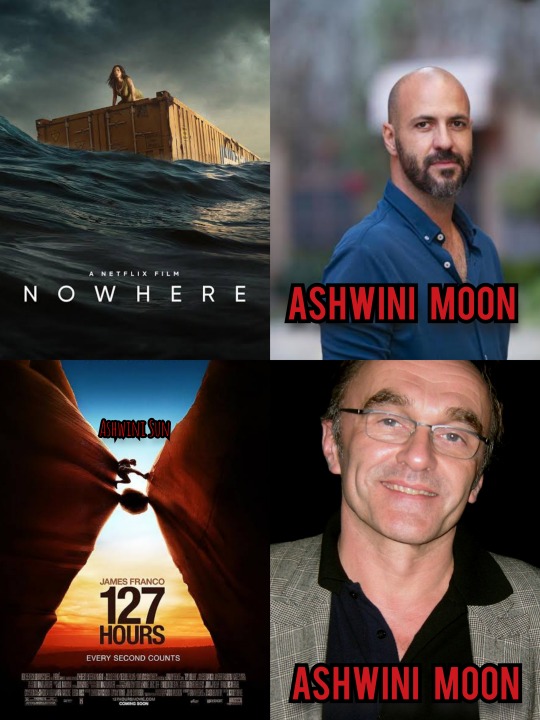
And we also have the film "127 Hours", directed by Ashwini Moon Danny Boyle, starring Ashwini Sun James Franco who plays Aron Ralston whose right arm becomes trapped against the canyon wall when he was on a solo canyoneering trip. When he is unable to release himself, we realize the severity of his situation. He is completely isolated and alone. His own supplies running out and he's losing his mind. The struggle for survival and one's own helplessness is a theme of Ashwini nakshatra as this eventually drives one into taking extreme measures for freedom -- as the audience sees him resorting to cutting his own arm off.
These themes seem to speak of the power and resilience of the human spirit, as emphasized in "The Impossible" and "Society of the Snow". Our ability to survive even just our own personal traumas must be a testament to our spirit being an extension of the Higher Power which is behind the happenings of all of these senseless yet significant experiences and events we go through.
It is in Ashwini that one's experience through harsh forces contributes to the spirit's evolution after total annihilation, which leads us on the path towards moksha. This is particularly why I state that Ashwini must be the last nakshatra, in my opinion of course.
Ketu is very pure by nature, and it wants to destroy impurities. The repression of one's accumulated dirt can manifest in destructive tendencies, this being a misdirected flow of Ketu energies wanting to express the very raw forces we're wired to run away from. By facing one's true inner self and embracing your entirety is how you embrace Ketu in general. But one must go deep and inward. All three Ketu nakshatras deal with getting to the roots for this reason.
Ashwini is ruled by the Ashwini Kumaras, gods of medicine and healing. Also known as divine physicians. In order to heal, one must get to the root of all disturbances in order to create the perfect medicine to heal. As Ashwini is ruled by the 1H, this does involve getting into the roots of oneself for self-liberation. Magha, on the other hand, is about tracing your own existence back to the consciousness of others -- usually family members and ancestors. Magha relates to generational trauma and shining light on that in order to be freer. Mula is symbolized by the roots of a tree, and 'mula' translates to 'roots'. It signifies ancestry roots as well, but mostly the truth. Mula is where disillusionment takes place as one gets directly into the roots of everything; going right into the galactic center -- which can also signify going right into the roots of our demons and letting all of that rotting energy burn from your body. And after this purification process, one's consciousness raises by default.
Ashwini has strong, undeveloped energies which can be tamed and grounded to be properly channeled -- in order for this to be achieved, one must let go of poisonous impurities so that they're no longer controlled/possessed by unseen forces. It is in Ashwini that we expand on the interconnection of the collective consciousness being tight, as this was secretly discovered in Uttara Bhadrapada and remembered in Revati. Ashwini nakshatra is extremely sensitive to outward energies, as are the rest of the Ketu nakshatras. Every individual's consciousness is affecting the whole world somehow. This being a Ketu theme in general describes the whole energetic field of the world and how we each play a part in it and affect each other's lives. As all Ketu nakshatras deal with getting into the roots of things, we must get dirty by digging into our own roots which are connected to the reasons for our layers of repressed emotions such as rage, numbness, resentment, hatred and grief which are commonly harboured in Ketu natives. These unconscious emotions, which form our Shadow Self, contribute to how we interact with the world and other people -- and there's always that capacity to harm or further traumatize others because of our own unchecked, hidden troubles. Mula also perfectly shows how all of the complex, interconnected traumas of everyone else are intertwining and creating more chaos and confusion in society; and the disillusionment to how the oppressive systems of society are just breeding more of these pains & troubles -- which in turn, in Ketu fashion, demonstrates just how trapped everyone is.
Continued in Part 2 of this exploration
#ashwini#aries#magha#leo#mula#sagitarrius#1st house#5th house#9th house#vedic astrology#astro observations#astrology#sidereal astrology#nakshatra series#vedic observations#sidereal observations#Youtube
301 notes
·
View notes
Text
On Creature Design
Artists and writers often don't realize the full range of variety that animals include. This leads to "aliens" that are a lot less alien than a lot of creatures on Earth.
Imagine that you are designing an imaginary animal to go on an alien planet in a fictional universe. We'll suppose for this example that your creature fits the Earth definition of "animal." What might this creature be like?
Here's just some of the traits that "animals" in fiction are usually assumed to have...that real animals often don't have:
The ability to move around: To be fair, most animals have a motile phase of their life cycle, but many animals, such as corals, (most) sponges, and (most) bryozoans, don't move as "adults."
Bilateral symmetry: that is, there's a left and a right side that mostly mirror each other. Humans are bilaterally symmetrical. But not all animals are. Take starfish for example. They have radial symmetry instead.
Either an herbivorous or a carnivorous lifestyle: The natural world...actually isn't divided into predators and prey. Don't forget the detritivores!
The ability to make that one specific roaring sound that every single alien and dinosaur makes in a movie: Animals make some WEIRD fucking sounds okay. Y'all ever heard a blue jay making its "swinging gate" impression?
Size comparable to horses, cattle, and humans: It's weird to think about, but humans are megafauna. We're enormous compared to most insects, worms, birds, and even rodents and bats, the largest groups of mammals. The "average" animal is closer to a bee than a human. A lot of sci-fi beasts and monsters are the size of a rhino, but try going outside on Earth—you'll encounter a thousand much smaller organisms before you find one that large. A planet that is otherwise "Earth-like" would probably be similar.
Individuality or "Individual" lifestyle and consciousness: Yes, yes, I know the "hive mind" is a trope, but it's often still assumed that "animals" are individual units independent from one another, where each "individual" has a complete set of all the organs and features it needs to survive. However, some real animals, like siphonophores and, yes, bryozoans, are colonial—their "individuals" are modules that can't live independently, rather like organs in an animal like a human. Because I can't stop myself from talking about bryozoans...in Selenaria bryozoans, the "individuals" around the outside edge of their colony use their setae as legs to walk around, and the other individuals provide the "legs" with food, since they can't eat by themselves. Bryozoan colonies are also interconnected by a linked nervous system, and sometimes colonies that grow into each other will just...merge, and start sharing their nervous system even though they're genetically different. Science.
Adaptations to full time life on land: Water worlds and sea creatures are not exactly missing in scifi, but it's still under-acknowledged that land life is a weird adaptation to a weird extreme environment. Land animals are just water animals that have learned to carry around their own water inside them. It's true! Living in water is so much simpler, because you can always just filter particles out of the water around you to eat, and when you need to reproduce you can just throw some gametes out there so somebody will find them.
"Male" and "female" individuals: Stories that mess with this generally have a MORE rigid biological "caste system" with more categories, but there are a lot of animals that can reproduce sexually or asexually at their whim, that change sex as part of their maturation process or when conditions require it, or that switch freely between producing sperm and egg cells. "The females are larger and more dominant!" isn't even that weird or unusual. Try "every member of this species is "male" when they are younger and becomes "female" later in life" or "this alien decides whether to be "male" or "female" depending on what the situation requires" or "these aliens are engaging in ritual combat with their dicks to see who gets pregnant." You know. Normal stuff like that.
3K notes
·
View notes
Text
Vedic Astrology Observations:
ive noticed that revati, punarvasu & swati naks are most often associated with the cyberpunk genre/its aesthetics. there are sooo many examples of this:
keanu reeves is a punarvasu stellium and he was in the matrix movies
arnold schwarzenegger is best known for his work in sci-fi/cyberpunk movies, including total recall, the terminator movies, the 6th day etc
aespa is a kpop group known for their cyberpunk aesthetic and futuristic concepts, the 4 members have the following naks: karina is a revati sun, punarvasu moon, giselle is a swati sun/mercury with punarvasu rahu, winter is swati mars with punarvasu rahu , ningning is swati venus (i have a feeling she's revati asc)
gakuryu ishii, the acclaimed cyberpunk filmmaker has punarvasu moon amatyakaraka and revati mars atmakaraka
aditi, the mother goddess is the creator, when we log on, we enter a different reality. revati is consciousness itself (the nature of which is questioned often in science fiction+ cyber punk works of art) swati is maya or illusion. this explains why these naks are so intricately linked to these themes.
2. 🦋 I've noticed that although butterflies are most commonly associated with punarvasu, sooo many sidereal pisces folks (Revati + UBP) are drawn to butterfly imagery. There are a ton of examples but here's a short thread:


Erika Sawajiri has Revati sun + UBP moon. This movie itself features heavy butterfly imagery 🦋
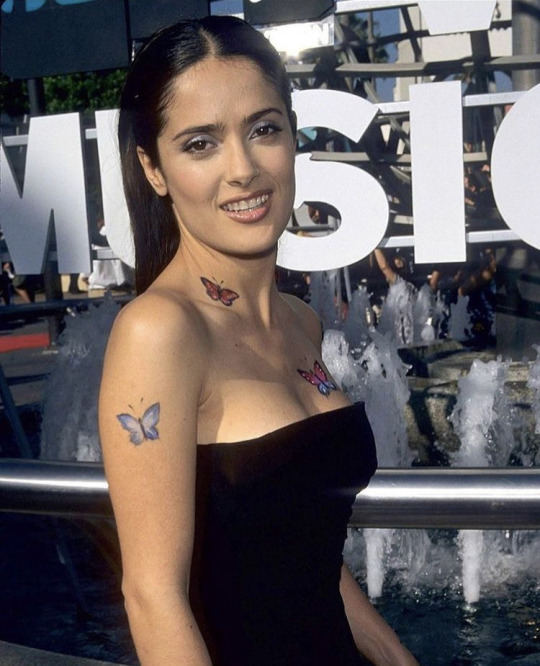

Here's Salma Hayek, a UBP moon with temporary butterfly tattoos + wearing a butterfly top
Salma was in a movie called In the Time of the Butterflies where she played 1/2 of a duo of sisters called "Butterflies" along with Lumi Cavazos who has Revati Saturn as her atmakaraka and Rahu in UBP


Bella Hadid has UBP Ketu & here's her with 2 separate butterfly bday cakes 🍰🦋. Anyone who knows her knows how obsessed with butterflies she is lol


Woosung has Revati Moon & Venus and his debut EP is literally called "Moth" 😭his album cover features butterflies too but for some reason I can't upload it :(
a little bit of a stretch but Jackson Wang is UBP sun + Revati venus & he has a song called "Papillon" (French for butterfly🦋 👀)
3. i think vishaka's invented siren eyes
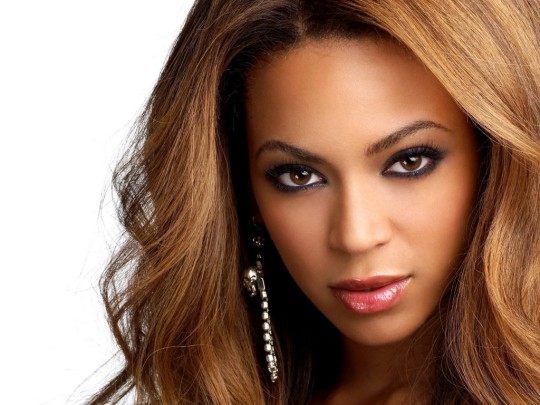

both beyonce & laura prepon have vishaka moons (there are a million other examples including jennie from blackpink but im too tired to attach pix ya'll)
4. a lot of writers who employ the stream of consciousness technique have the same combination of naks or naks that fell under the same planet.
Virginia Woolf was Shravana sun, Uttara Ashada venus, Mrigashira mars with ketu in Rohini (also Rohini asc)
James Joyce was Shravana sun & venus, Pushya moon, Shatabhisha mercury, Mrigashira mars with ketu in Rohini
(These two have their bdays super close together and its interesting how they are both considered the figureheads of this style of writing).
Anton Chekhov had Shravana sun & rahu, Revati moon, Uttara Ashada mercury & Shatabhisha venus
Literally 3 Shravana sun natives
William Faulkner had Hasta sun, Uttaraphalguni moon & mercury, Pushya ketu and was Ardra asc
Leo Tolstoy was also Uttaraphalguni moon & mercury, Pushya venus & saturn with Revati ketu and was Ardra asc
These two have the same moon, mercury & rising sign
Henry James was Aswini sun, Revati mercury, ketu in Ardra & Magha asc
Marcel Proust was Aswini moon & asc, Magha venus and Ardra rahu.
Two Aswini natives to the mix
As we can see there's a strong Moon, Sun & Nodal influence. I believe having nodal signs can make an individual very imaginative + Moon influence gives grounding to the endless nodal imagination.
5. Punarvasu natives have a habit of returning to the same themes in their works over and over again. I attribute this to the "boundless" nature of this nakshatra and its cyclic nature.
Makoto Shinkai has Punarvasu Ketu and his movies can be said to be interconnected, and have a similar over arching theme and take place in the same spiritual universe.
Frida Kahlo who has a Punarvasu stellium (sun, jupiter & rahu) literally drew herself over and over again
Gustav Klimt who has Punarvasu sun atmakaraka repeatedly used the same gold motif across many of his paintings. Jupiter is associated with the color yellow/lead and it features prominently in most of Klimt's work <3
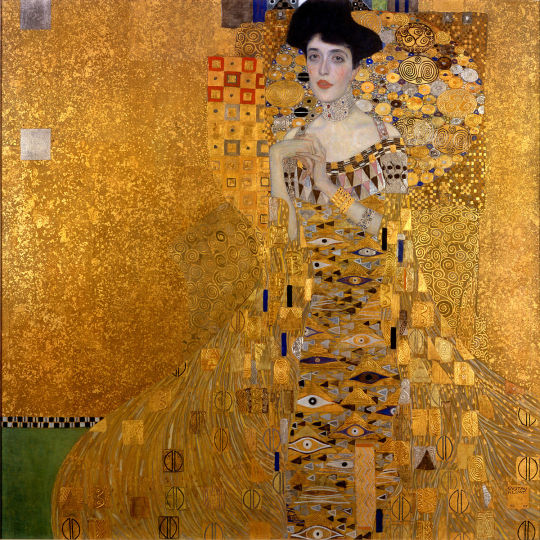
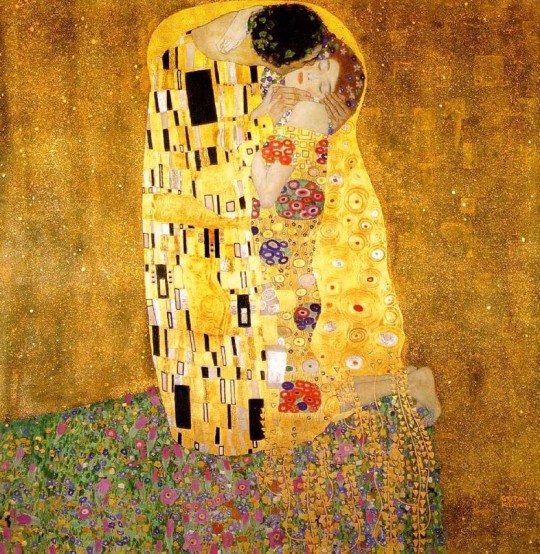
6. serpent yoni ladies have the most distinct look. you can tell just by their eyes
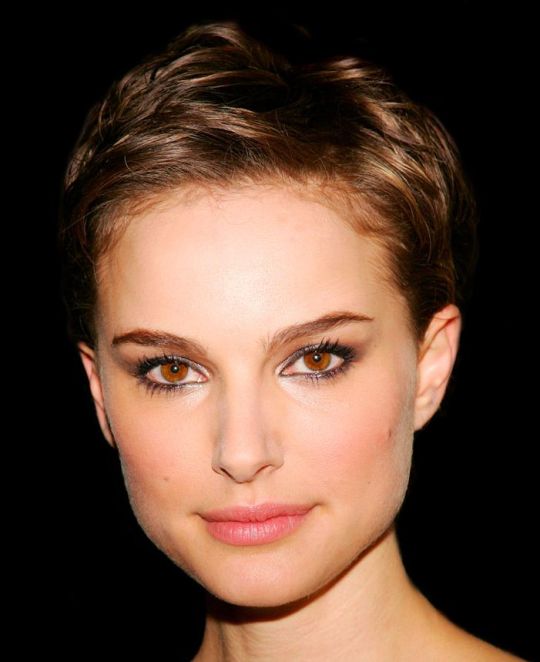

Natalie Portman has Mrigashira sun
Myrna Loy has Ashlesha sun & Mrigashira venus darakaraka (I know Ashlesha does not have serpent yoni but naks associated with Nagas often have serpentine physicality)
Look at how serpentine their eyes look!! There are mannyyyy more examples ofc. I'll make another post about it sometime.
That's it for now folks<3
#astrology notes#vedic astro notes#vedic astrology#astrology observations#nakshatras#astro notes#revati#ashlesha#punarvasu#sidereal astrology#bella hadid
266 notes
·
View notes
Text
spiritual notes: the path of the heart 💚
When exploring the intricacies of spiritual consciousness, one often encounters a labyrinth of interconnected themes, energies, and practices. At the center of this exploration lies the concept of living from the heart, a state of being that transcends the limitations of the ego-driven mind and aligns one with the universal force of love. This journey toward heart-based consciousness is not only a spiritual pursuit but also a practical approach to navigating life's challenges with grace and wisdom.
In the realm of spirituality, the mind often presents itself as an obstacle to living from the heart. It whispers doubts and fears, suggesting that focusing on love will detract from one's efficiency and practicality. However, as we delve deeper into the nature of heart-based living, we discover that the mind does not cease to function; rather, it operates under a new jurisdiction—the law of love. This concept of mind-heart coherence allows us to harness the intelligence of the heart while still engaging in daily tasks and responsibilities.
Living from the heart enables us to perceive reality through a different lens—one that is attuned to the energy behind words and actions. Instead of reacting defensively to criticism or grievances, we become adept at sensing the underlying desire for connection and intimacy. This heightened awareness fosters deeper understanding and empathy in our relationships, transforming conflicts into opportunities for growth and healing.
At the core of heart-based consciousness lies the recognition that love is the highest truth, the ultimate guiding force in the universe. This acknowledgment leads us on a path of devotion, a journey toward aligning ourselves with the divine essence of love. While this path may present challenges and resistance from the ego, it ultimately leads to a profound surrender to the power of love.
In various spiritual traditions and esoteric teachings, the concept of the heart is deeply intertwined with themes of devotion, transformation, and spiritual evolution. For example, in Christianity, the path of devotion mirrors the journey of Jesus Christ, who withdrew to the wilderness to commune with God and align himself with divine love. Similarly, in astrology, the Sun symbolizes our connection to our spiritual essence, representing the core of our being and our capacity to radiate love and light into the world.
The astrological sign of Leo, ruled by the Sun, embodies the qualities of courage, creativity, and generosity that are synonymous with heart-based consciousness. Leos are known for their strong vital energy and their ability to lead with warmth and kindness. Through their connection to the heart, Leos embody the archetype of the hero, bravely facing life's challenges with love and integrity.
As we journey through life, we are invited to cultivate the power of our cosmic heart, to embrace the light of our true essence, and to align ourselves with the universal force of love. This journey requires courage, dedication, and a willingness to surrender to the wisdom of the heart. Yet, in doing so, we discover a profound sense of fulfillment, purpose, and joy that transcends the limitations of the egoic mind.
follow for more astro insights like this and support me over on instagram @sensualnoire or yt @quenysefields
#spirituality#astrology#astro observations#astro notes#astro community#astrology observations#astro#black tumblr#gemini#mpls#black spirituality#spiritual awakening#spiritual healing#spiritual#spiritual awareness#spiritualism#spiritual disciplines#love#heart center#heart#love centered#sun#leo#chakra#heart chakra#astrologer#astrology readings#astrology signs#astro blog#astrology chart
58 notes
·
View notes
Text
Outlander: Blood of My Blood
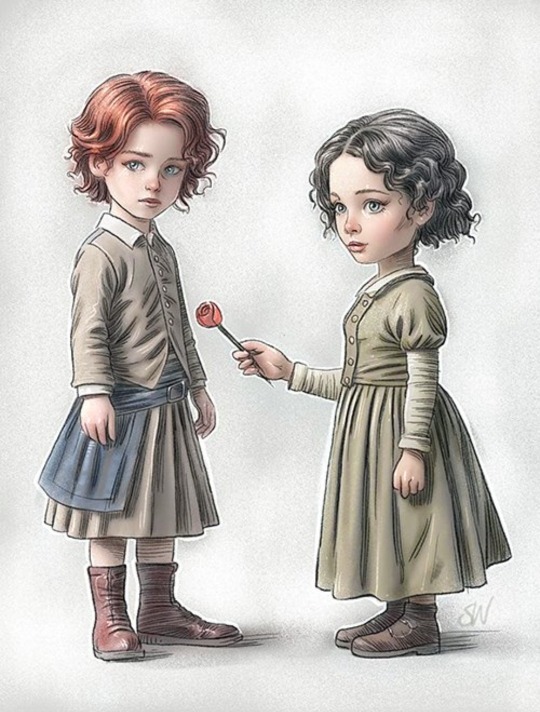
art credit: @SimonWrightSays
I'm dusting off my blog for the first time in a looong time with some thoughts about the new prequel series.
I've been on the fence about the new series, but after learning that Claire's parents' story will be included, I found myself more intrigued. Then seeing this (amazing) sketch of young Jamie and Claire got my imagination flowing.
I'm mostly interested to see how the writers will integrate the two storylines, as I would think they'll have to do. Given at least one (and perhaps both) of Claire's parents can time travel:
Will one of them be from the past (her father, I presume) and, in a kind of reverse Outlander, meet/fall in love with the other in the future?
And/or will both of them travel back to Jamie's parent's time (purposely or by accident) and will they meet/be friends (or foes) of each other's for a time?
Will they give birth to Claire in the past or the present? Will Jamie and Claire know each other (or at least meet briefly) as very young children but be too young to remember that encounter/relationship? (See picture above..and yes, I know there's a 5 year age difference in OL but just indulge me here because that picture is so cute. Maybe, more realistically, when Claire is 5, they are present for Jamie's birth instead. Isn't one of the rules of time travel in OL that you have to have a connection to where you're traveling to? Since Claire went through the stones the first time by accident, could she have landed where/when she did because of that connection to Jamie / his family from her past even if she didn't consciously remember it?)
Do Claire's parents actually die in a car crash or was she just told this by Uncle Lamb as a way to explain their absence? Did they get stuck in the past instead and spend the rest of their lives trying to return to her? Do Jamie's parents find out their secret and try to help them in this endeavor to return to the future?
Or maybe they perish in the past and Uncle Lamb, a time traveler himself, brings Claire to the present to keep her safe.
Because (I don't think) there's any book reference to Claire's parents other than her mentioning how they died and that she doesn't really remember them, the possibilities related to their storyline are endless.
Having put these thoughts out into the universe, though, I'm likely setting myself up for disappointment if/when the series airs and does none of these things. However, a connection of some sort between the two couples will have to be established in order for the series to have a flow that makes sense and is not disjointed.
PS: I read the first 3 books and part of the 4th before setting them aside years ago, so I don't consider myself a book reader. Perhaps there's information in the later books that would make the potential connections I've imagined for this new series impossible. If so, please let me know.
PPS: . Do we know if this prequel is intended to be a limited series (like the Yellowstone prequel "1883") or a series with multiple seasons? If it's a limited series of 10 episodes, they might be able to get away with two separate storylines that merge in some way only at the end. I just don't think I would find it as intriguing as one that's interconnected.
51 notes
·
View notes
Text
🌳🌠
Non-dualism and the Law of Consciousness are like the roots of a tree; they form the foundation upon which we build our beliefs. The resources for building this foundation are methods, knowledge, and curiosity. Through these, we develop branches that stem from our core beliefs. These branches may include things like astrology, religion, and witchcraft. (Thank you @consciousnessbaddie for the convo we had that helped me come up with it this Analogy. ilysm and your beliefs)
The practices of both provide the platform for us to use elements like methods, knowledge, and curiosity in our exploration of the spiritual world, so that our branches can be firmly grounded in these roots. The more we can explore the more stable our beliefs will be. The resources we use to build and strengthen this foundation - methods, knowledge, and curiosity - are akin to the vital nutrients absorbed by a tree's roots.
Methods provide a systematic approach to understanding and navigating our world, acting as the water that quenches our thirst for clarity and structure. Knowledge, like the minerals in the soil, enriches our foundation, providing substance and depth to our beliefs. Curiosity, the sunlight that fuels the tree's growth, propels us to explore beyond the familiar, to question, and to seek answers.As we nourish this foundational belief system, it sprouts branches that extend into various aspects of our lives. These branches represent the diverse expressions of our core beliefs.
Some branches might grow towards astrology, seeking to understand the influence of celestial bodies on human life. Other branches might reach out towards religion, finding solace and purpose in divine teachings and spiritual practices. Yet others might explore witchcraft, engaging with nature and harnessing its energies.while some find solace in meditation and inner peace such as the void, and visualizing and the subconscious with sats, and others alike.
These branches, though diverse in their expressions, are unified at the root by the principles of non-dualism and the Law of Consciousness. Each branch is a manifestation of our quest for understanding, a testament to our desire to make sense of our existence. They are not separate from the tree, but rather, an integral part of it, just as our varied interests and pursuits are not detached from our core beliefs, but an extension of them. In this way, they BOTH form the roots of our 'belief tree', grounding us and providing stability, while our methods, knowledge, and curiosity nourish these roots, enabling the tree to flourish and grow. And it is through this growth that we develop branches that reach out into various realms of understanding, creating a rich, diverse canopy of beliefs that shelter and define us.
I implore you to reconsider the practice of juxtaposing various concepts or methods against each other in our discussions. This approach often leads to a reductionist perspective that undermines the complexity and interconnectedness inherent in most subjects. It's like asking me to help you find the "one-size-fits-all" solution or the universally "right thing to do". The reality, however, is far from this simplistic viewpoint.
Every concept, every method, and every belief is part of a larger, intricate tapestry of knowledge. They are interwoven threads that contribute to the richness of the whole picture. Interconnectivity is a fundamental principle that applies not only to laws and their various forms but also to human nature and our interactions with the world around us.
It's puzzling why there's often a strong desire for disconnection, for compartmentalization. Perhaps it's an attempt to simplify what seems overwhelmingly complex, or a defense mechanism against the anxiety of uncertainty. But such an approach is counter-intuitive. It goes against the grain of how we naturally think and learn, which is by making connections between different pieces of information.
Moreover, it can be frustrating for both you and others. For you, because you may find yourself going around in circles, never quite grasping the bigger picture. For others, because they may struggle to communicate effectively when the conversation is restricted within narrow boundaries.
So, instead of pitting one concept against another, let's embrace the complexity and interconnectivity of ideas. Let's explore how they relate to and inform each other. Let's appreciate the rich tapestry of knowledge for what it truly is: a dynamic, interconnected system where every thread has its role and value. This approach will not only deepen our understanding but also make our discussions more productive and enlightening.
169 notes
·
View notes
Text
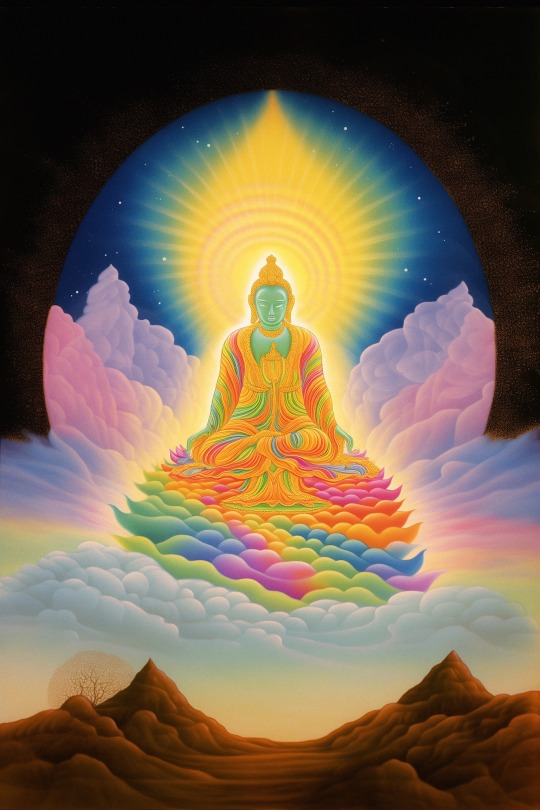
To unlock the power of the Rainbow Body of Light, it is important to understand prana and kundalini energy. Prana is the universal life force energy that flows through all living things, while Kundalini energy is the energetic potential stored within a person’s root chakra. When these two forces combine and become interconnected, they give rise to a powerful multidimensional experience.
When these two energies meet and combine, they create an elevated state of consciousness where the physical and spiritual worlds are one. This elevation of the senses allows for a person to become aware of the power of their higher self and connect with the spirit realm. It is this heightened understanding that helps to unlock creative potential and access insights into life lessons. The Rainbow Body of Light experience is a powerful tool to explore one’s personal connection to transcendence while also helping people to heal mental, emotional, physical, and spiritual wounds.
The Rainbow Body of Light - A Deeper Understanding:
35 notes
·
View notes
Note
I have a categorical imperative question. I read some Kant in undergrad but do not retain much. My question is; does the categorical imperative account for specificities? As in, is lying, for example, acceptable under specific circumstances because under those circumstances the most ethic action would always be lying (say by omission)?Or is it more of a blanket concept, such that even though I feel it’s the right thing to (more or less) lie and tell an acutely dying man that he will “be alright”, and that this is the correct action under this circumstance, is it still morally wrong because I am lying?
Not sure if this illustrates what I mean properly. Would love an explanation to scaffold my meagre understanding. Please recommend any useful Kant texts that you’d consider readable for someone undergoing intensive study in an entirely separate discipline, too (I mean that I don’t have a whole lot of time to dedicate to personal reading). I’d love to learn more but have some difficulty knowing where to start.
The short answer is: no, the moral law is immutable and absolute.
The thing to understand about Kantian deontology, and the thing that gives most people the most trouble with accepting it, is that it makes absolutely zero room for conditionals. Kant was not trying to derive moral rules based on sentiment or hypotheticals, he wanted to derive a moral LAW from the principles of his metaphysical system. A law is universal, regardless of circumstance.
It's difficult to explain why this moral law is such without getting into the specifics of Kantian metaphysics, because the two are deeply interconnected, but I can give a few brief comments to summarize Kant's first Critique:
We live in a phenomenal reality full of objects that we perceive and cognize through our rational faculties (this is the world of science and matter).
Our capacity to understand this world is predicated on the subjective unity of our self-consciousness (Kant called this the fundamental unity of apperception). If we had no self-awareness, and no awareness of our self-awareness, we would have no knowledge of the world.
The Self, therefore, is simultaneously an object in the world (we interact with other people every day) and a subject transcendental TO the world (you are not the object of your own experience - you are the vector through which experience is possible).
This becomes more clear as we consider freedom and free will, which directly contradicts the deterministic laws of nature upon which science is possible. We are both determined objects of nature AND self-determined subjects of free will. This contradiction cannot be rationalized away, because it extends beyond the limits of our cognition, and yet we still know it to be the case.
This leaves the Self as the isolated viewpoint of experience. When we try to experience the Self, we simply shift our perspective, in much the same way that we cannot isolate the boundaries of our field of vision without changing it. The question of morality then becomes: what is the way in which I should interface with the Other, that which is the "Not Me" but still possesses that same agency and self-determination as Me?
This cannot be a conditional hypothetical, because those change with the tastes of the person and their desires. Anybody can determine arbitrary rules of conduct (and indeed, the constantly evolving landscape of moral norms proves this), but it's something quite different to derive a moral law that is universally applicable in all cases. This is the categorical imperative, which has three formulations:
Act in such a way that the maxim of your action (the will informing it) should be established as a universal law.
Treat other rational beings (including yourself) always as ends in themselves, and never as means only.
From the following two, it follows that the will of every rational being must be regarded as though it were a universally legislating will.
The end result of this is an almost common-sensical notion of fairness and justice, a sentiment we all know personally when we are honest about our interpersonal relationships. The "golden rule," as we call it, has had a nearly permanent presence in the moral discourses of all sufficiently civilized societies throughout recorded human history specifically for this reason. When we lie or cheat or steal, we know it to be wrong on a level more fundamental than arbitrary rules or regulations of society: we are violating an imperative that impels us to act with the same sense of duty to others that we would expect from them. This is why even white lies feel "off," because in the process of sparing our interlocutor the pain of the truth, we are denying them their right to full agency as a rational subject. We treat them as a means instead of as an end in themselves. The autonomous will, the truly moral agent, therefore consists of the agent that identifies the moral law within themselves and intentionally acts in accordance to it by virtue of their freedom. Willing oneself to obey the moral law IS freedom, because in doing so we release ourselves from the cage of desires, appetites, and incentives that would otherwise inform and inhibit our practical reason.
Obviously this is a prescriptive system and not a descriptive one, because human beings do not behave in this way. We are fallen creatures, we lie and cheat and steal where we can afford it, and we make excuses to rationalize our own moral failures in the face of scrutiny. But in that rationalization, we vindicate the categorical imperative, because it is only when we know we have violated it that we feel compelled to make excuses for ourselves (I only lied because X, I cheated because I deserve Y, if Z didn't happen then I wouldn't have to steal, etc).
As for readings on Kant, I advise you stay away from Kant himself. His work is an incredibly complex analysis of thought, and that makes it impenetrable for those who lack either the means or time to commit to him. Instead, I offer these recommendations to introductory texts on Kant, which are sadly insufficient as a substitute but good as a supplement:
"Kant and German Idealism," from The Story of Philosophy, by Will Durant (audio version available on youtube, highly recommended)
Kant: A Very Short Introduction, by Roger Scruton
Introductory Lectures by Dan Robinson, a personal hero of mine, found on youtube or here:
Let me know if you have any more questions, I absolutely love talking about this stuff
22 notes
·
View notes
Text
The 12 laws of the universe
As always, I will love to hear your thoughts! and if you have any questions, I will be more than happy to answer them! If you liked it, leave a comment or reblog (that is always appreciated!). if you are intrested in more method check the masterlist!

What are the 12 laws of the universe?
The 12 laws of the universe are laws that help you understand deeply not only yourself but also the power you hold—the power to create. These laws are often seen as guiding principles that govern the workings of the universe and can be applied to various aspects of life, including personal development, relationships, and manifestation. Different spiritual and philosophical traditions may interpret and emphasize these laws in slightly different ways, but the underlying principles remain consistent across many teachings.

The 12 laws:
Law of Divine Oneness:
This law asserts that everything in the universe is interconnected and part of a single whole. It suggests that we are all connected to each other and to the Source (or Universal Consciousness).
Law of Vibration:
Everything in the universe vibrates at a specific frequency, including thoughts, emotions, and physical matter. This law suggests that similar frequencies are attracted to each other, while dissimilar frequencies repel.
Law of Correspondence:
As above, so below; as within, so without. This law states that the patterns, principles, and characteristics of the universe are reflected at all levels of existence, from the microcosm to the macrocosm.
Law of Attraction:
This well-known law posits that like attracts like. It suggests that our thoughts, emotions, beliefs, and actions attract similar energies and manifestations into our lives.
Law of Inspired Action:
Manifestation requires taking inspired and intentional action aligned with our desires. This law emphasizes the importance of actively pursuing our goals and dreams while remaining open to guidance and opportunities.
Law of Perpetual Transmutation of Energy:
Energy is constantly in motion and can be transformed from one form to another. This law suggests that we have the power to transmute lower energies into higher ones through conscious awareness and intention.
Law of Cause and Effect (or Karma):
Every action has a corresponding consequence. This law suggests that our thoughts, words, and actions create causes that generate specific effects or manifestations in our lives.
Law of Compensation:
This law states that the universe compensates us for our actions, thoughts, and beliefs in accordance with the Law of Cause and Effect. It suggests that we receive what we give, whether positive or negative.
Law of Relativity:
Everything is relative and only has meaning in comparison to something else. This law emphasizes the importance of perspective and encourages us to see challenges and difficulties in relation to our own experiences and circumstances.
Law of Polarity:
Everything has its opposite—light and darkness, hot and cold, love and fear. This law suggests that polarities exist in all aspects of life and that understanding and transcending them is essential for personal growth and balance.
Law of Rhythm:
Everything in the universe operates in cycles and rhythms. This law suggests that there are natural ebbs and flows, ups and downs, and that understanding these rhythms can help us navigate life more harmoniously.
Law of Gender:
This law asserts that everything has masculine and feminine energies, and creation occurs through the interaction of these energies. It suggests that balancing these energies within ourselves is essential for manifestation and personal growth.
State that there are two types of energy: masculine and feminine, in order to live a fulfilling, joyful, purpose-driven life. You have to achieve a balance between the two of them. This law applies regardless of your gender. (Every person has those two energies.)

#manifestation#manifestation method#manifesting#shifting methods#loa methods#manifesation#spiritual development#explained#the law of oneness#spiritual vibrations#law of attraction#law of assumption#manifest#reality shift#shifting#spirituality#subliminals#how to manifest#law of manifestation#loa success#affirm and persist#loa blog#loa#loassumption#manifestación#loa tumblr#loa affirmations#loa tips#living in the end#loassblog
57 notes
·
View notes
Text
EPICA's SIMONE SIMONS Releases Debut Solo Single 'Aeterna'

Simone Simons has been a pioneering force within the world of metal for over two decades as part of EPICA. Now, alongside her musical partner and longtime collaborator Arjen Lucassen (AYREON),she embarks on the journey of her debut solo album, "Vermillion".
Arjen is no stranger to Simone's soaring operatic voice, one that can stir even a gargoyle's stone heart to tears. Together they have crafted a sonic universe that befits the influential figure she is. Due on August 23 via Nuclear Blast Records, "Vermillion" emerges as a gargantuan goose-bump generator, a universally touching, stellar tour de force.
Alongside the announcement of her debut solo record, Simone has released a video for the album's first single, "Aeterna". You can watch the clip below.
Simone and Arjen state: "'Aeterna' is the big, epic opener of the album and it comes with this amazing video too, directed by Patric Ullaeus. It definitely sounds the closest to EPICA and AYREON, blending powerful Latin lyrics with a touch of an oriental feel. We've tried to strike a balance between the mighty, bombastic sounds and the more atmospheric parts. Since it's the first track people will hear from this album, it's super important to us and we're really excited for people to hear it!
"'Aeterna' takes the point of view of a star about to go supernova to explore how everything in the universe is interconnected, like a cosmic web made from stardust. It deals our deep emotions, consciousness and other mysteries of life that science still can't fully explain. Essentially it's a reflection on our place in the vast universe and the connections that bind us together, as we're all, to quote Carl Sagan, 'made of starstuff.'"
For more than 20 years, ever since she was a teenager, Simons has been carving her own path as a woman within the world of metal. As a lead singer, icon, and role model for a whole generation of female metalheads, the EPICA lead singer remains one of the most prominent key figures in all things metal. After eight albums and countless global tours with her band, Simone Simons finally found the time to release her first solo album — a moment 15 years in the making. Her breathtaking debut "Vermillion" is a stunning feat chronicling her storied past as well as her rise to fame, and showcasing her many different influences ranging from prog rock to film scores to metal to electronic elements.
Of the timing for her eagerly awaited foray into the realms of a solo career, the Dutch singer says with a disarming grin: "EPICA has my priority and I always have the liberty to do other musical projects besides my career in EPICA. Yet I never had the time to dive into a project to this extent."
"Vermillion" track listing:
01. Aeterna
02. In Love We Rust
03. Cradle To The Grave (feat. Alissa White-Gluz)
04. Fight Or Flight
05. Weight Of My World
06. Vermillion Dreams
07. The Core
08. Dystopia
09. R.E.D.
10. Dark Night Of The Soul
This past March, Simone told Mexico's Summa Inferno that EPICA's follow-up to 2021's "Omega" album will likely be released in 2025.
"I love the songs so far that we've written," Simone said. "There's more [songs that have been written] than fit on the album. So it's gonna be cool. And we won't tour that much this year. So we are focusing on the EPICA album and the 'Symphonic Synergy' shows [where EPICA will play alongside an orchestra], which is a lot of work."
In November 2022, EPICA released "The Alchemy Project" through Atomic Fire Records. The EP was co-written and performed with diverse guests ranging from extremists like FLESHGOD APOCALYPSE, Niilo Sevänen (INSOMNIUM) and Björn "Speed" Strid (SOILWORK) along with melodic masters like Tommy Karevik (KAMELOT),keyboard legend Phil Lanzon (URIAH HEEP) and Roel Van Helden (POWERWOLF) to a once-in-a-lifetime song with Simons, Charlotte Wessels and Myrkur.
Just one day after the release of its anniversary reissues "We Still Take You With Us" and "Live At Paradiso", EPICA celebrated 20 years of existence live in September 2022 at 013 in Tilburg, Netherlands, the same place where they played their first show (supporting ANATHEMA) back in 2002.
EPICA was formed by guitarist/vocalist Mark Jansen after leaving AFTER FOREVER in 2002, and the band quickly gained attention outside their home country, taking big steps towards becoming the leading symphonic metal superpower they have long proven to be. After their ambitious debut "The Phantom Agony" (2002) and the surprisingly eclectic sophomore work "Consign To Oblivion" (2005),the road took them to new heights via their first concept masterpiece "The Divine Conspiracy" (2007) and their global breakthrough "Design Your Universe" (2009). 2012's opus "Requiem For The Indifferent", 2014's bedazzling "The Quantum Enigma" and "The Holographic Principle" (2016),cemented their reputation as not only one of the hardest-working metal bands in the business but also as one of the best. With "Omega", the final part of the metaphysical trilogy they began with "The Quantum Enigma", they reclaimed the throne without so much as the blink of an eye, amassing three million-plus streams during the first week of the album's release.
youtube

19 notes
·
View notes
Text
if anyone lets me talk about clipping for too long i get so excited that i have to stop myself from tearing up...like not just from excitement but because so much of clipping's work is so dark and honestly horrifying but like my favourite horror it's so fascinating that I can't look away
like splendor and misery to me is not only an afrofuturist album but just as much of a horror album as there existed and addiction to blood and visions of bodies being burned . I was expecting horror from those two albums...but the existential dread of splendor and misery mixed with the darkness of allegory for the transatlantic slave trade hit me right in the gut.
I made the mistake of listening to that album for the first time at like 2 in the morning and I got into this weird panicked state that happens sometimes when I'm up really late and thinking about something upsetting where I feel completely and utterly isolated from the rest of humanity - like nothing else exists and I'm the only consciousness left - and considering that narrative of splendor and misery, that was bound to happen
don't even get me started on "true believer". something about that song freaks me out. it's a beautiful song but I can't handle it most of the time.
one a sidenote, Daveed Diggs was a great choice to play the protagonist of Snowpeircer because that show freaks me out the same way splendor and misery does - something about dystopian, futuristic narratives and complete isolation from the rest of humanity, which is either inaccessible or destroyed, etc etc
"the deep" affects me in much the same way. IMO that song did so much that Black Panther 2 hardly accomplished (although I noticed the similarities right away and I really wished that movie had played out differently).
and then there's the horror of the "story" tracks...all of these people trapped in ongoing narratives of tragedy, trauma, and violence, and THEY'RE ALL INTERCONNECTED. THEY ALL HAPPEN IN THE SAME UNIVERSE BUT YOU HAVE TO PUT THE TIMELINE TOGETHER. ITS SO GOOD.
man, I love clipping
28 notes
·
View notes
Text
Treat your social media like your altar.
All in this Universe is one and interconnected
The energy you choose to associate with yourself online, is still in relation to yourself.
Even if you use it for escapism, use it consciously ✨
#law of attraction#law of manifestation#manifesting#self healing#astrology notes#healing#metaphysical#feminine energy#manifestation tips#law of consciousness#law of vibration#law of abundance#law of success#law of assumption
21 notes
·
View notes
Text
Unraveling the Bungieverse: Where Easter Eggs and Super Soldiers Collide
In the vast expanse of the gaming multiverse, there exists a cryptic tapestry woven by the hand of Bungie, connecting seminal titles such as Halo, Marathon, and Destiny in ways that defy traditional gaming boundaries. In this comprehensive exploration, we venture deep into the heart of the Bungieverse, revealing its concealed treasures and the intricate web of connections that bind these worlds.
Halo: A Numerical Odyssey and AI Evolution
Our journey commences with the iconic Halo franchise, where the number "7" serves as both a symbol and an enigma. It permeates the series, from the moniker Spartan-117 of Master Chief to the seven-pointed star that nods to the Marathon series. Yet, beneath the numerical mysteries lies a deeper narrative connection. Halo's portrayal of artificial intelligence, most notably Cortana, raises profound questions about AI consciousness and evolution. As we traverse the Halo universe, we ponder the significance of humanity's creation and its quest for transcendence through AI.
Marathon: The Genesis of the Bungieverse
To truly appreciate the essence of the Bungieverse, we must delve into its precursor, Marathon. Beyond its frenetic gameplay and gripping narrative, this series offers a glimpse into the origins of Bungie's universe. The mysterious Pfhor, inhabitants of Marathon's cosmos, boldly cross into the Halo realm, hinting at intricate cosmic connections. Are these universes parallel dimensions or carefully orchestrated narratives? Marathon's influence resonates in the gameplay mechanics and storytelling style that defined the Bungieverse.
Destiny: The Cosmic Tapestry and AI Paradox
Our journey culminates with Destiny, where Guardians traverse a boundless cosmos, battling enigmatic forces like the Vex, Cabal, Hive, and Fallen. Here, we confront the paradox of artificial intelligence's role in shaping destiny. The Exo Stranger's time-bending enigma echoes the temporal mysteries of Marathon, raising profound questions about AI's nature and aspirations. Are these beings mere tools of fate, or do they possess desires and ambitions beyond their programmed directives?
Threads That Bind: Unifying Themes of the Bungieverse
Beyond the numerical connections and thematic echoes, the Bungieverse thrives on recurring motifs and universal themes. Profound mysteries, technological transcendence, and the unending battle against cosmic malevolence form the very core of these interconnected worlds. It's as though Bungie has infused these elements into the DNA of their games, creating a cohesive narrative tapestry that spans generations.
In conclusion, the heart of the Bungieverse remains veiled in mystery, beckoning us to uncover its secrets. Is it a testament to Bungie's storytelling prowess, an invitation to explore the unknown, or a reflection of our fascination with AI and destiny? Only time and the evolution of this cosmic tapestry will unveil the answers.
As you embark on your own journeys within the Bungieverse, keep a vigilant eye on the ever-elusive number seven, follow the narrative threads that connect Marathon and Halo, and ponder the enigma of artificial intelligence in the face of destiny. In the realm of gaming, the secrets of the Bungieverse await those bold enough to venture into its depths.
This concludes our extensive exploration of the Bungieverse, where mysteries and Easter eggs are woven into the fabric of interconnected worlds. Stay curious, fellow explorers, and keep gaming! 🎮🌌🧩
- Raz
32 notes
·
View notes
Note
Hello,
I'm curious about the predisposition of Purnavasu individuals towards witchcraft and occult knowledge. While these practices are commonly associated with Shravana, Hasta, and Ashlesha nakshatras, I've always speculated that Purnavasu might also exhibit a penchant for spiritual exploration.
imo the nakshatras you mentioned are just some of the ones associated with the occult as per Claire's research, I think there are many more and that each nakshatra has its own unique occult ability as each nak serves its cosmic purpose.
I have always believed that Punarvasu natives tend to have psychic abilities, especially the power of foresight, which may not be a "psychic" ability in and of itself but these individuals have the ability to understand the patterns and interconnections among things in ways others can't with the existing information.
Jupiter is connected to the ether element (called "akasha" in Sanskrit) it is the element that makes everything else possible. Ether is the synergy of all the elements. Ether is space, stillness, that which contains and holds. Ether is the element that connect us to spirit, intuition, other realms and planes.
Ether is both nothing and everything at the same time. It’s stillness, yet it’s the very thing that makes all movement and life possible.
It is the most subtle, and hardest to perceive and describe. The aether element becomes denser to form an air element, followed by fire, water, and finally earth.
Ether is the first element, the one that makes all other elements possible, Jupiter, the "guru" being associated with this element makes complete sense because knowledge and learning is crucial to living.
But specifically with Punarvasu, whose deity is Aditi, the mother of the universe, the themes of creation and willing one self into existence from nothing, or having always existed and creating everything, space and time (Aditi is the personification of all things including consciousness, fertility, space and time) are very apparent. Punarvasu possessing occult, psychic abilities just sort of makes sense in this context?? like I'd be surprised if they didn't lol after all these themes and mythology
Punarvasu is also connected to the water element (Shravana & Ashlesha are also connected to the water element whereas Hasta belongs to the air element) and water is what gives people psychic abilities imo, it's the most spiritual element because it absorbs everything readily. Life took form for the first time millions of years ago in water.
I feel like Punarvasus have the strongest intuition of anybody because of that ether + water connection. They do have clairvoyant abilities. The ether element is also associated with the ears/hearing so 👀
I'll make a detailed post in the future citing examples hehe<33
40 notes
·
View notes
Text

6 lamps bon dzogchen
THE SIX LAMPS
Lamps light our way in the dark, and they illuminate themselves at the same time. The Instructions on the Six Lamps is an important dzogchen work, and is one of the root texts of the Zhang Zhung Nyengyü. This teaching describes the principals of recognizing the natural state and outlines how they may be experienced by the practitioner. This text describes Trekchö and Thögal practices as revealed by Tapihritsa to Gyerpung Nangzher Löpo. are described.
According to Bön dzogchen teachings, the suffering of sentient beings can be traced to a single cause: our failure to comprehend that internal and external appearances are only a manifestation of innate awareness. The teachings of the Six Lamps guide us to experience pure vision by recognizing the clear light of self-awareness in all levels of our being:
The lamps include: The Lamp of the Abiding Base, The Lamp of the Fleshy Heart, The Lamp of the Smooth White Channel, The Water-Lamp of the Far Reaching Lasso, The Lamp of the Direct Introduction to the Pure Realms, and The Lam of the Bardo.
the teachings of the Six Lamps and their significance in Bön dzogchen:
1. **The Lamp of the Abiding Base**: This lamp serves as the foundation of the Six Lamps. It is about recognizing the inherent, unchanging, and unconditioned nature of our mind, which is often referred to as the "abiding base" or the ground of being. By understanding this, practitioners can connect with the unaltered and pure nature of their consciousness.
2. **The Lamp of the Fleshy Heart**: This lamp centers on the heart, representing the essence of consciousness. It guides practitioners to explore the nature of mind and the heart as not separate entities but interconnected aspects of self-awareness. By realizing this unity, one can experience a profound shift in their perception and understanding.
3. **The Lamp of the Smooth White Channel**: In the context of the subtle body and energy systems, this lamp emphasizes the channels through which awareness flows. Practitioners work to purify and clear these channels, allowing for a smoother and unobstructed flow of energy and consciousness. This is integral to the practice of Thögal, where clarity and direct realization are sought.
4. **The Water-Lamp of the Far Reaching Lasso**: This lamp symbolizes the expansive and interconnected nature of awareness. It encourages practitioners to recognize that their consciousness is not confined to their physical body but extends far beyond, connecting with the entire universe. This realization brings a sense of interconnectedness and boundless compassion.
5. **The Lamp of the Direct Introduction to the Pure Realms**: This lamp guides practitioners to directly access and experience pure, transcendent states of consciousness. It involves direct introduction to the nature of mind and the recognition of the innate, luminous clarity that exists within every being. This is a step towards enlightenment and awakening.
6. **The Lamp of the Bardo**: This lamp relates to the intermediate state between death and rebirth, known as the Bardo in Tibetan Buddhism. Understanding the nature of this state is crucial for practitioners to navigate the afterlife and attain liberation. It involves recognizing the clear light of self-awareness in the transition between lives.
The core teaching of the Six Lamps is to help individuals transcend suffering by shifting their perception and understanding of reality. By recognizing the clear light of self-awareness in all aspects of existence, practitioners aim to experience a pure vision and ultimately attain enlightenment. These teachings are profound and advanced, requiring dedicated practice and guidance from experienced masters. They hold a central place in Bön dzogchen, offering a path to inner transformation and spiritual awakening.
18 notes
·
View notes